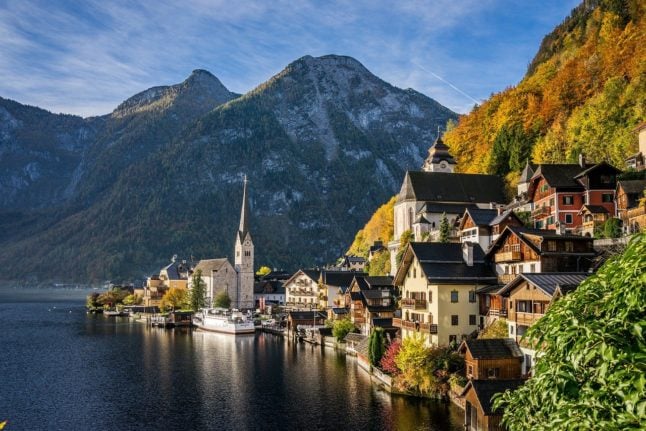Austria offers a large number of ski resorts, and some of them most of us have already heard about, such as St Anton, Sölden, Bad Gastein and Ischgl.
These popular spots sometimes tend to be very crowded during the winter season. Fortunately, there are many other great options that you might not be aware of, where you can enjoy quiet ski slopes surrounded by magnificent views.

Located in Mallnitz, Carinthia, just a train ride through a mountain from Bad Gastein, you’ll find this small but beautiful ski resort with long slopes and (usually) no queues at the lifts. The resort offers 12.8 km of slopes and has five lifts that take guests to the mountain tops. Situated between 1,266 and 2,636 m elevations, it is open from December to March.
A day pass for an adult during the high season costs €62.
READ ALSO: How to stay safe during the ski season in Austria
Ankogel is suitable for complete beginners or more advanced skiers or snowboarders. The slopes in the upper, high-alpine area of the resort are mainly challenging wide carving tracks, and at the base station of the resort, there are some practice lifts where beginners can learn to ski in a relaxed atmosphere.
The resort also has various freeride tracks that attract adventurous free-riders.
Gerlos is one of the highest resorts in the Zillertal area in Tyrol, and it is open from December to April. The resort is small and offers a cosy, familiar atmosphere while still providing access to one of Austria’s most popular ski areas, the Zillertal area.
The area offers 150 kilometres of slopes at altitudes ranging from 1,246 m to 2,505 m, with 52 lifts taking skiers to the mountain tops. There are slopes available for all levels, and queues are seldom long. Gerlos’ town centre has a lively atmosphere without being very crowded, unlike some of the nearby resorts.

Nassfeld ski resort is Carinthia’s largest resort but still does not tend to be overly crowded. Skiiers and snowboarders can enjoy 110 km of slopes and 30 lifts, taking them to the mountain tops from December to April every year.
The winter sports area is situated between elevations of 600 and 2,002 m. Nassfeld offers excellent views, many sunny days due to its location in southern Austria, and slopes for all skill levels.
If you prefer not to go down the regular slope, you can also visit snow parks, fun slopes, and freeride areas. Italy is just around the corner if you feel like experiencing some Italian delicacies during your stay.
Galtür is located in Tyrol and is one of the highest resorts in Austria and the highest in the Silvretta region. It is open from December to April and offers 43 km of slopes directly accessible from the resort. If you feel like skiing further, even if it involves experiencing more crowded areas, you can jump on a bus to Ischgl, where the extensive Silvretta Arena offers 239 km of slopes ready to be explored.
READ ALSO: Is it possible to have a cheap skiing holiday in Austria?
Galtür is a traditional Tyrolean village with a long history dating back 600 years. It has a family-friendly atmosphere and slopes for all levels. It is a popular ski resort among Austrian families, and apart from enjoying the slopes, it also offers cross-country tracks, hiking trails, and ice skating.
The Mölltaler Glacier is Carinthia’s only glacier ski area and the place to go if you want to start skiing as early as October.
It is open every year from October to May and is situated between 1200 m and 3122 m elevations. The highest point is at the summit of the Schareck, offering views of the stunning mountain Großglockner, Austria’s highest mountain.
The glacier ski area offers 17.4 km of slopes for all skill levels and 7 km of freeride terrain. The snow cover reaches around 450 cm in the high season. You can get to the highest point by jumping on the Mölltaler Gletscher Express funicular, which transports 220 passengers to an altitude of 2,234 m within 8 minutes.
Do you have a favourite hidden gem? Let us know in the comments below or send us an email at [email protected].



 Please whitelist us to continue reading.
Please whitelist us to continue reading.
It should be noted that both the Ankogel and Möltaller ski areas rely on reliable transport links from Salzburgerland. The main route through the Hohe Tauren mountain range is the car train service between Böckstein and Mallnitz. Worryingly this tunnel will be closed for 8 months from November 2024 for planned maintenance putting the finances of the Ankogel ski area under severe strain. Coupled with the ongoing road tunnel repairs on the A10 between Golling and Werfen accessing some of Austria’s well known and not so well known resorts will require a lot of patience and determination during the next two ski seasons.
That is a really good point and a great idea for a story. We will look into it! Thank you!